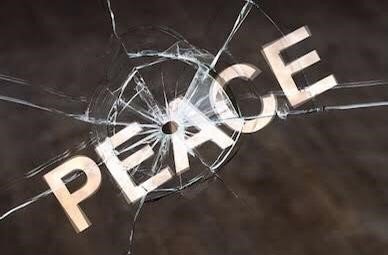By Ghulam Amin Beg
For some years we thought that we have learned our lessons and embraced peace after decades of violence.
We thought ‘the powers that be’ will ensure peace and calm in Gilgit-Baltistan as the gateway to CPEC and will shun the policy of ‘divide and rule’.
We thought coalition governments and inclusive policies will help transition to sustainable peace.
Sadly the Naltar tragedy has once again exposed this delusion and the fragility of peace in Gilgit-Baltistan as the fault lines are evident through the knee-jerk and spontaneous reactions on social media as well as on the streets and roads.
One thing is very clear. Building sustainable peace and conflict prevention is not only the job of security agencies and the administration. People from all segments of society — teachers, religious scholars, politicians, writers, poets, artists, lawyers, business persons, social and political activists, as well as policymakers, members of GBA and youth — need to work for peace.
If we reflect on the chronology of conflicts since the late 80s, there are a few lessons to learn:
1. Most conflicts have localised roots and can be solved locally. Empowering local arbitration and reconciliation efforts helps prevent violence. If external interests and administration get directly involved in local arbitration and reconciliation processes, it complicates the healing process.
2. Customary laws need to be enforced in land rights and land management. Every valley and community have centuries-old mechanisms to settle land ownership and access to common pastures and resources. Those laws need to be respected by the administration and the courts.
3. The capacity of the courts and prosecution needs to be enhanced to timely and justly dispose of cases. Justice delayed is justice denied. This leads to a sense of deprivation, frustration and violence.
4. Elections’ code of conduct needs to be implemented to ban sectarian hate mongers from campaigning and participating in elections. It has been experienced in the past that most conflicts aggravate and trigger pre, during and post-elections and are linked to certain event markers.
5. There must be an end to tampering with election results, use of wealth, and money, as well as the policy of divide and rule. Power politics, the formation of a new government, and the tug-of-war between administration and ministers for exercising authority and enjoying privileges unnecessarily trigger fault lines for self-interest and self-aggrandizement must be discouraged and stopped.
6. Finally, the chronic issues of poverty, illiteracy and access to health services in Diamer and pockets of underdeveloped districts, valleys, and marginalised communities like the Gujjar across GB need to be targeted for bringing them at par with other districts. There will be no sustainable peace if Diamer and marginalised communities remain under-developed.
7. The sooner the constitutional and human rights of GB are resolved in the light of the Supreme Court of Pakistan judgments and the UN resolutions as well as a meritocratic, inclusive, pluralistic and accountable system of self-governance is put in place, the better for a sustainable peace for CPEC and the future of Pakistan.

Ghulam Amin Beg is an international affairs commentator, development practitioner, policy analyst on youth, civil society and participatory governance with an eye on mountain areas in Pakistan and the Central Asian region.

The High Asia Herald is a member of High Asia Media Group — a window to High Asia and Central Asia

